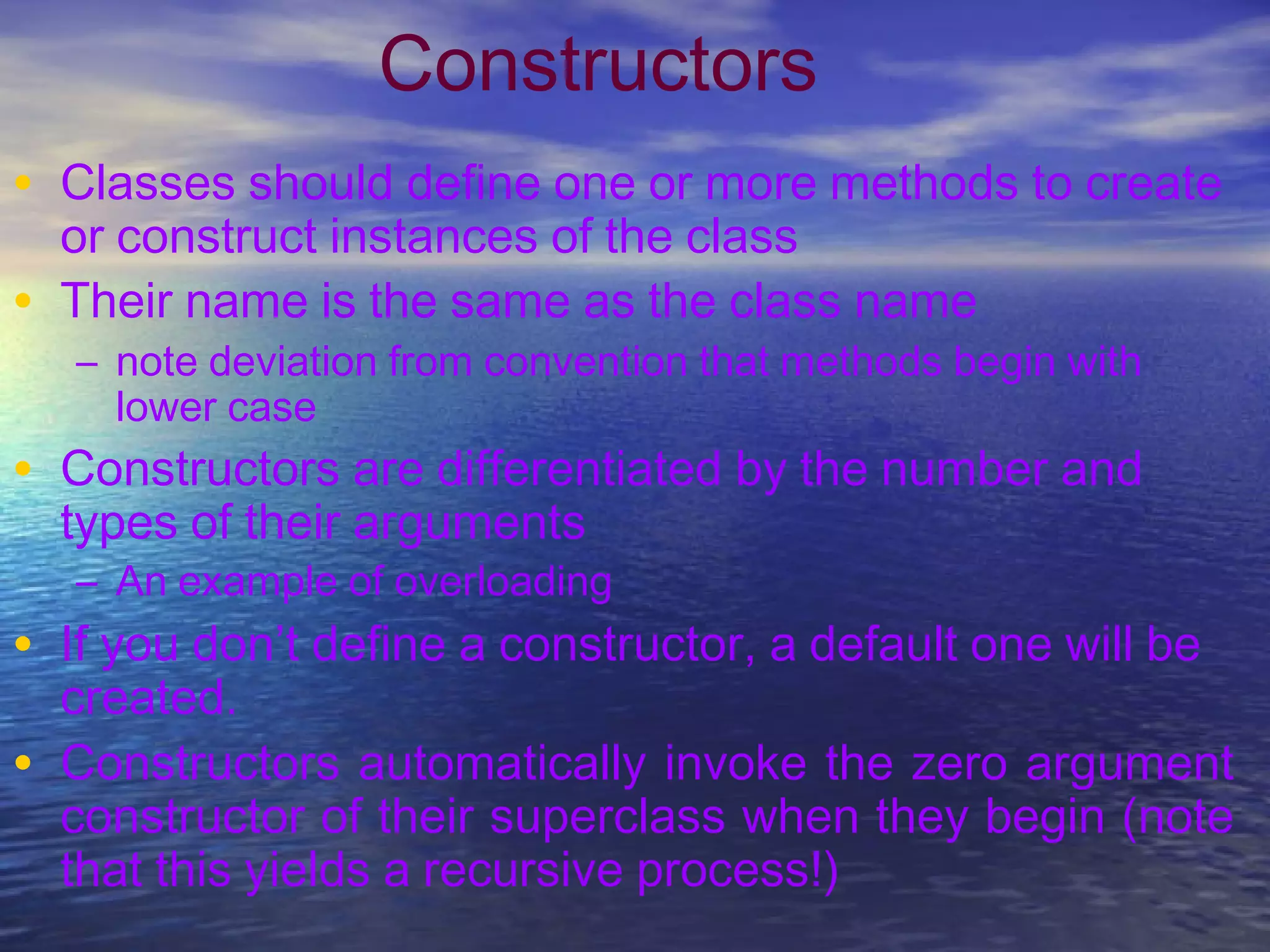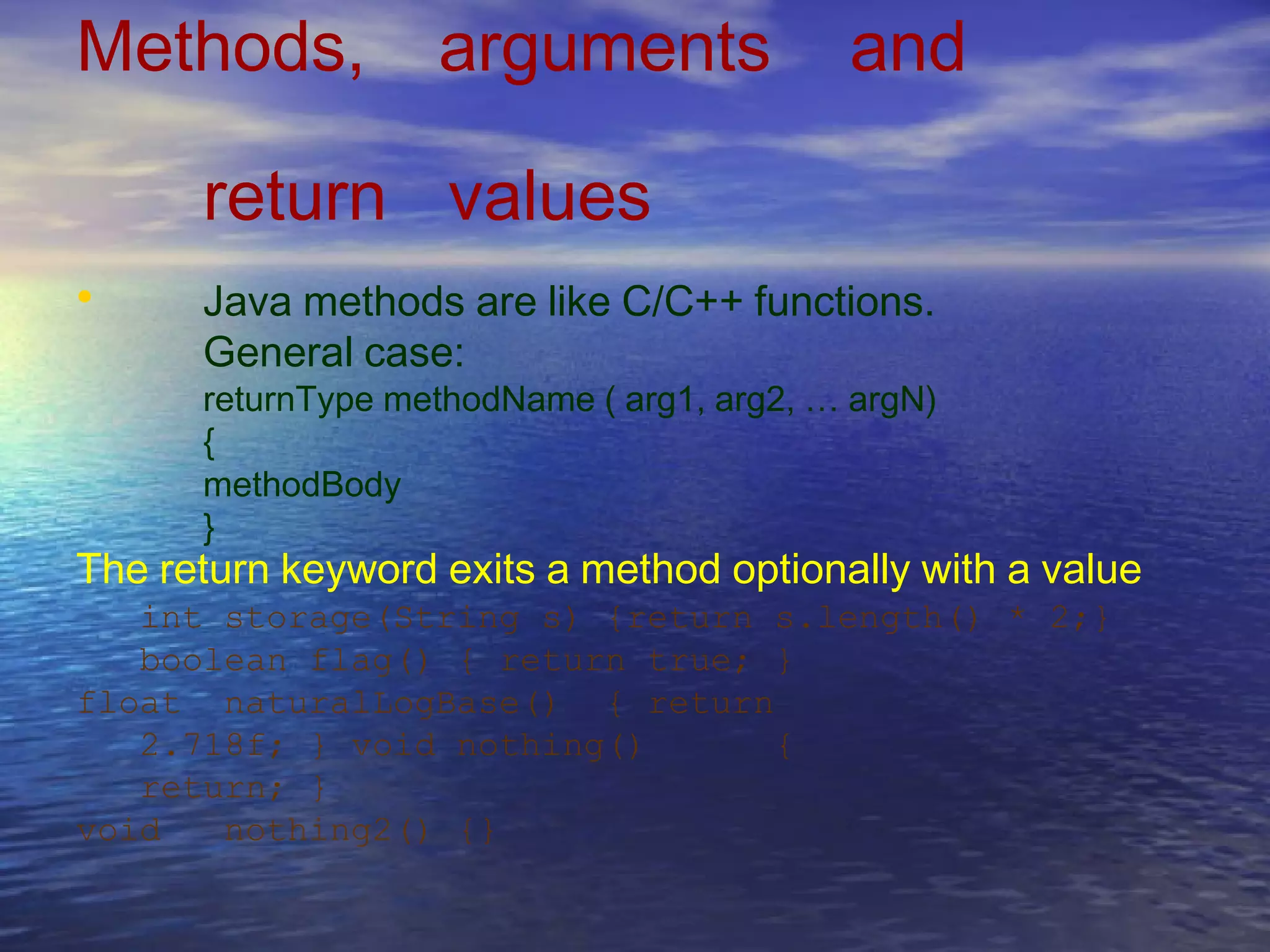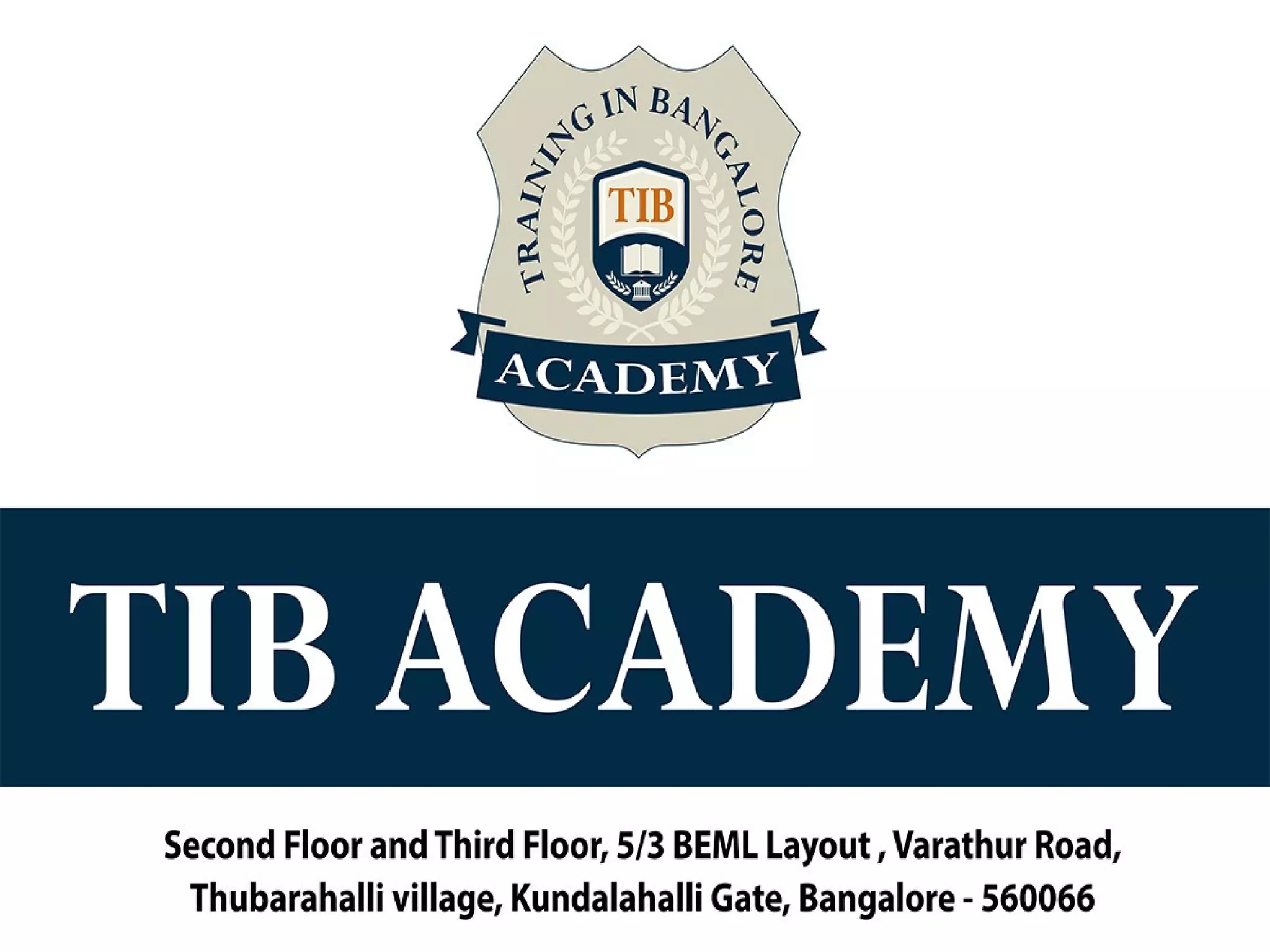The document provides an extensive overview of Core Java concepts, including Java syntax, object-oriented programming principles, classes, inheritance, and exceptions. It discusses data structures like arrays and collections, file handling, and serialization techniques. Additionally, it covers method definitions, constructors, and provides practical examples illustrating various Java features.
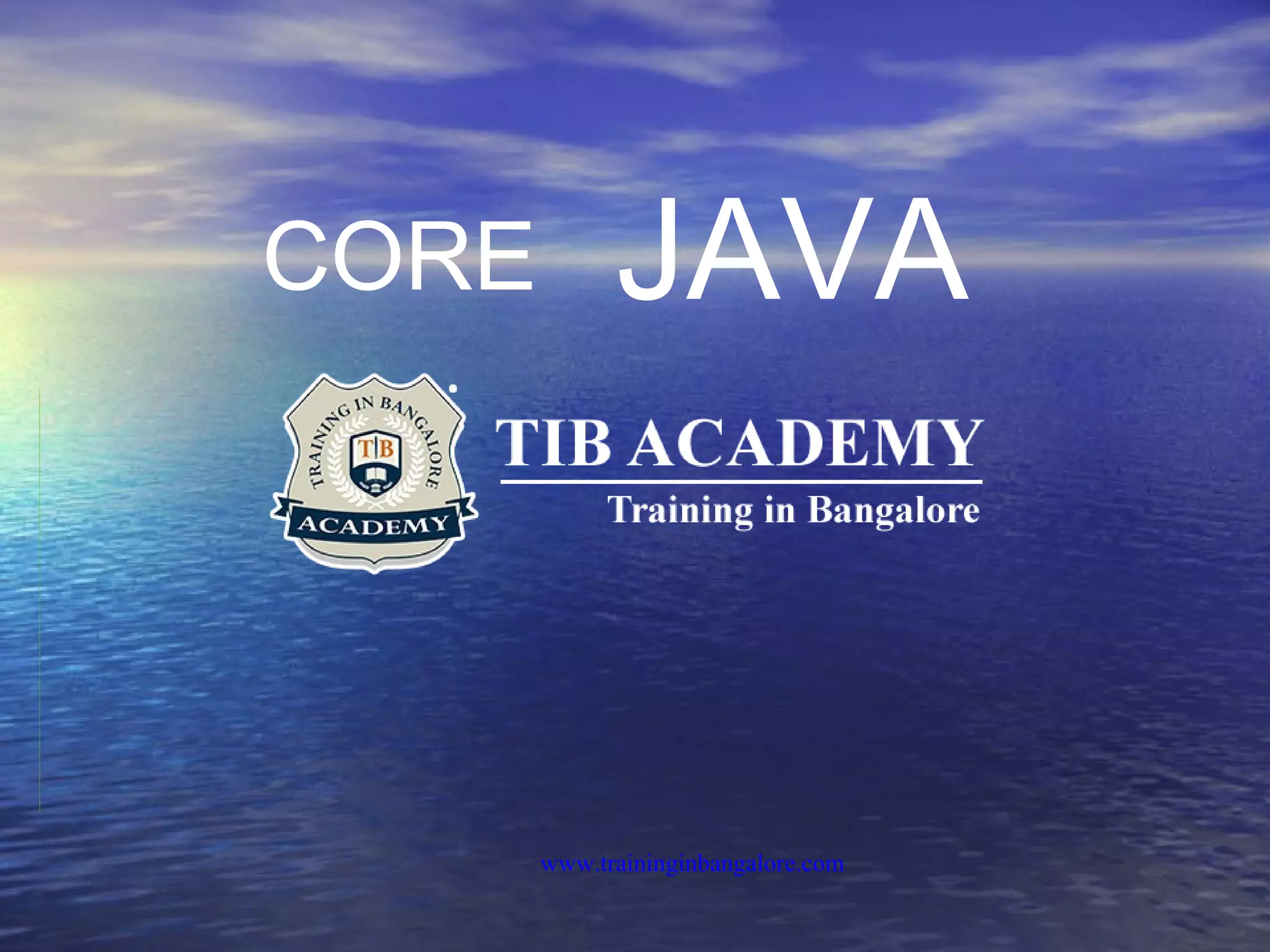
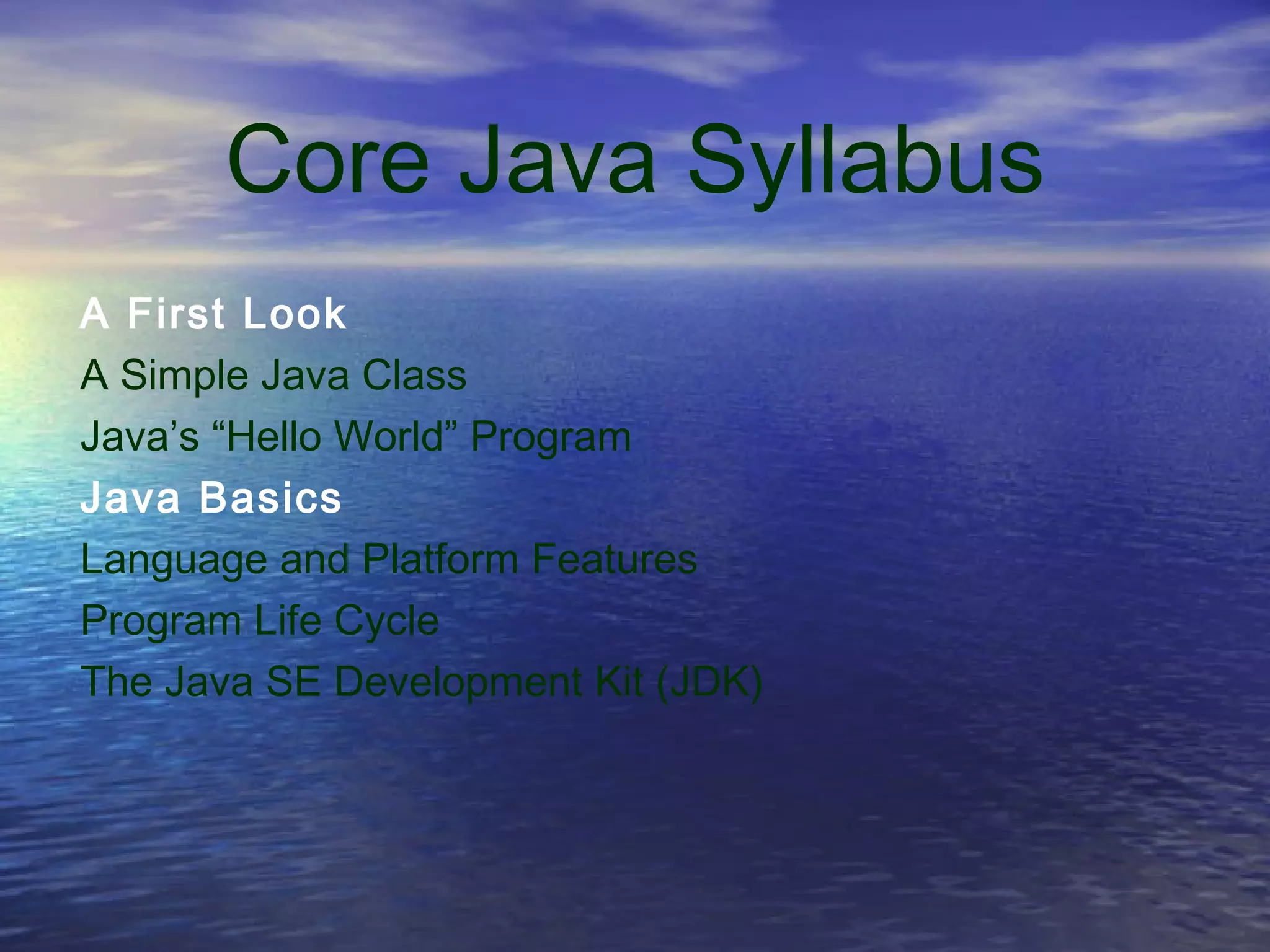
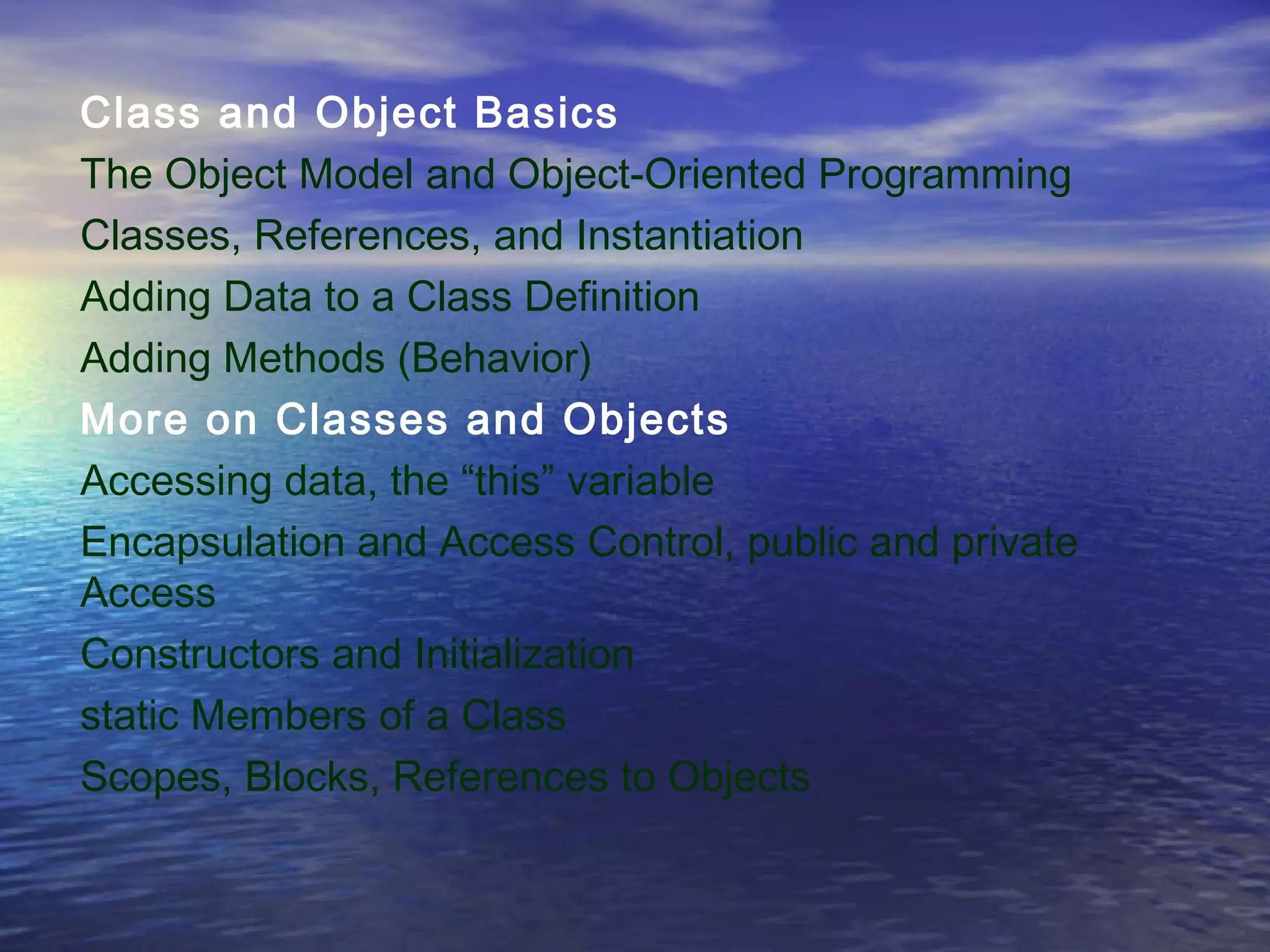
![Flow of Control[briefly due to attendee
experience]
Branching: if, if-else, switch
Iteration: while, do-while, for, break, continue
Strings and Arrays
String, StringBuffer, StringBuilder
Arrays, Primitive Arrays, Arrays of Reference Types
varargs](https://image.slidesharecdn.com/corejavaconcepts-180107061936/75/Corejava-Training-in-Bangalore-Tutorial-4-2048.jpg)
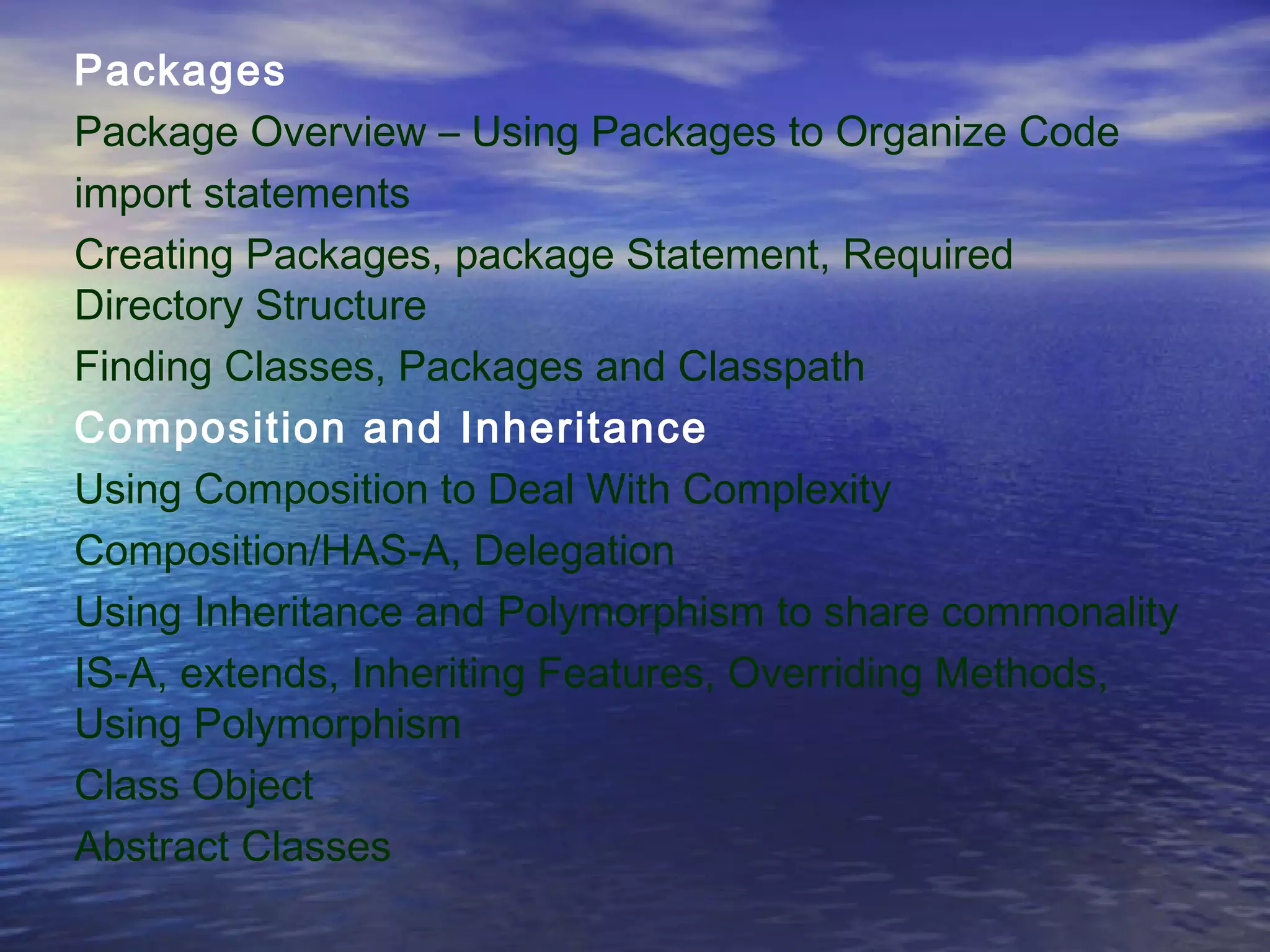
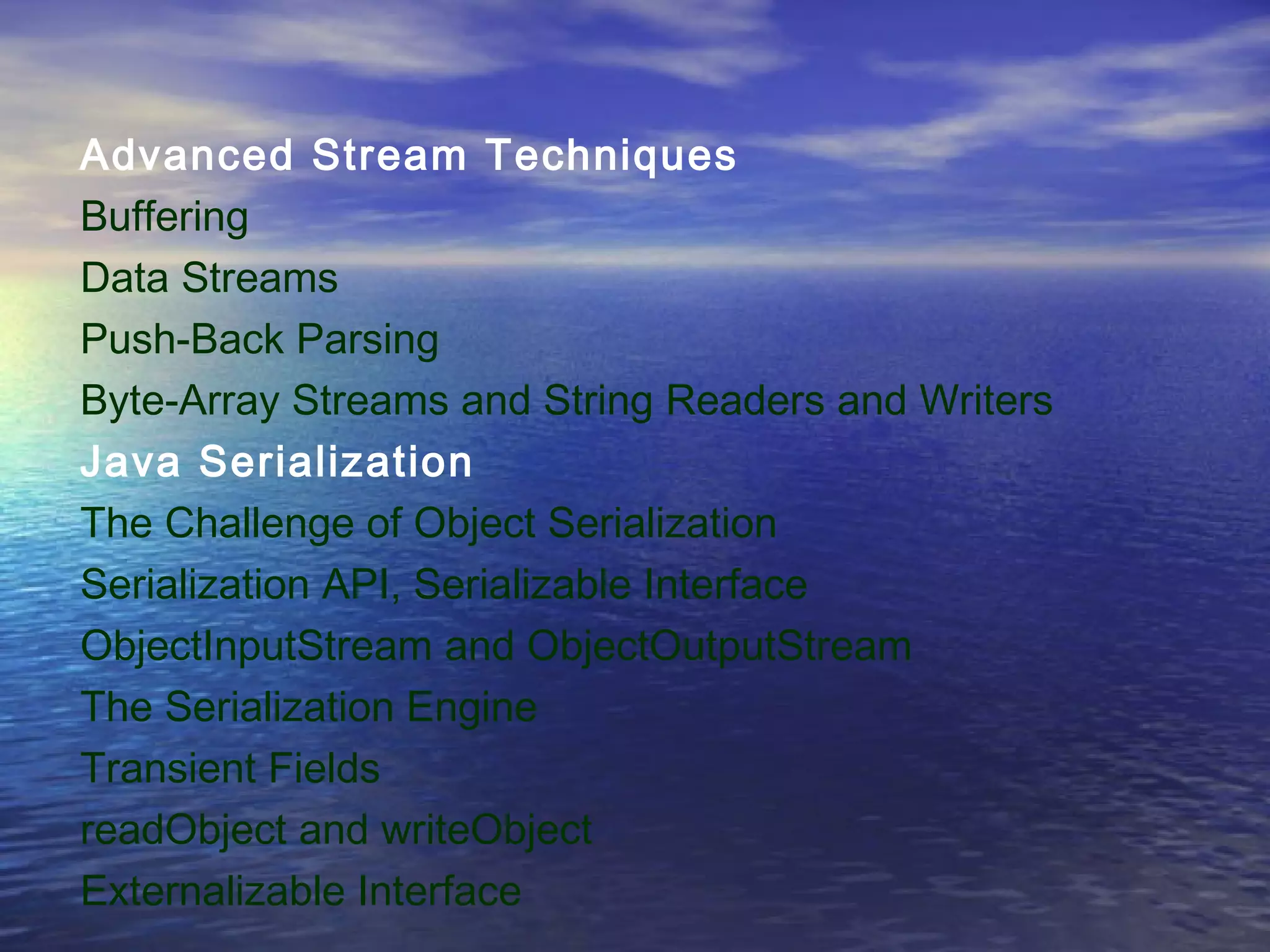
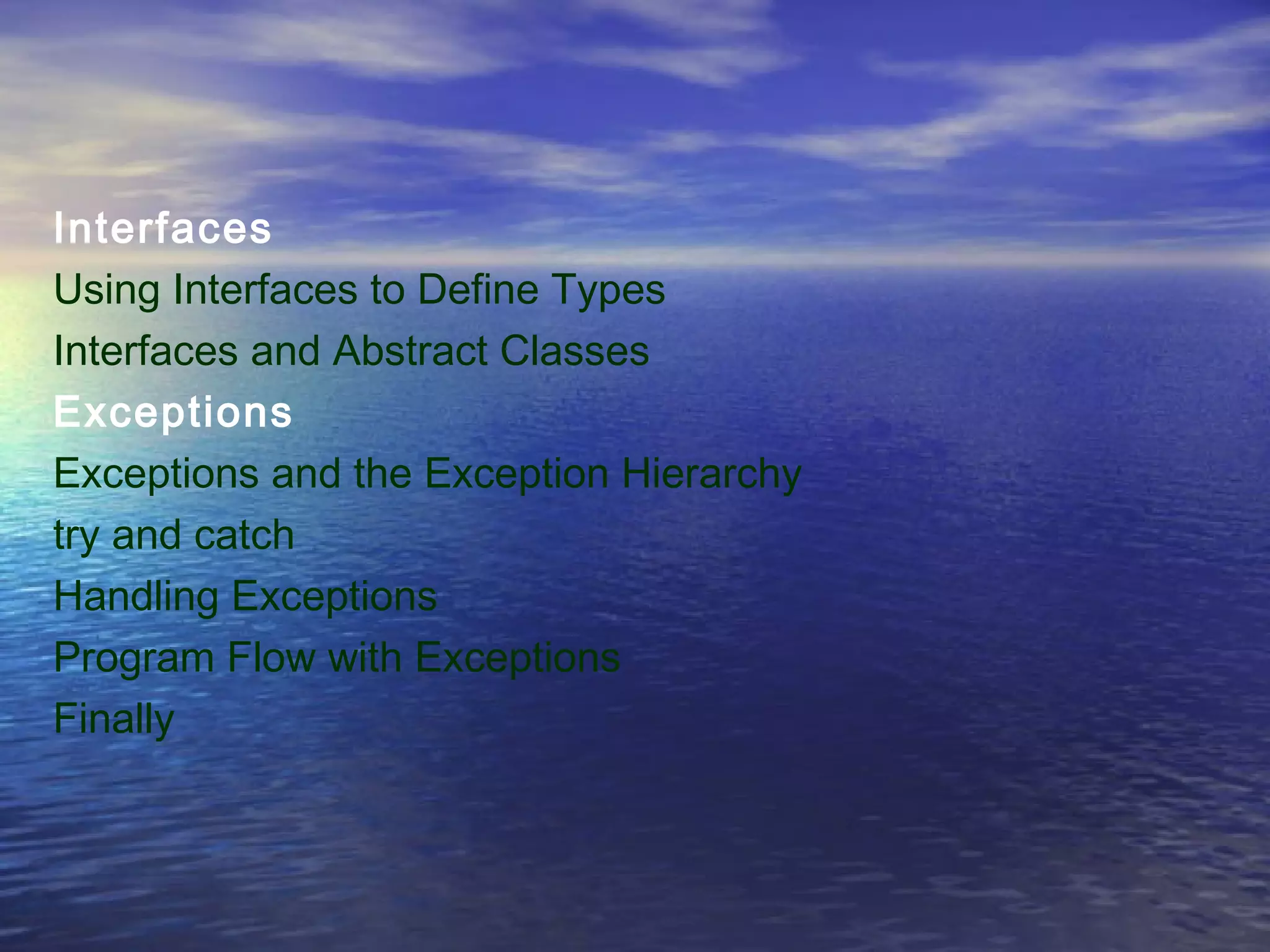
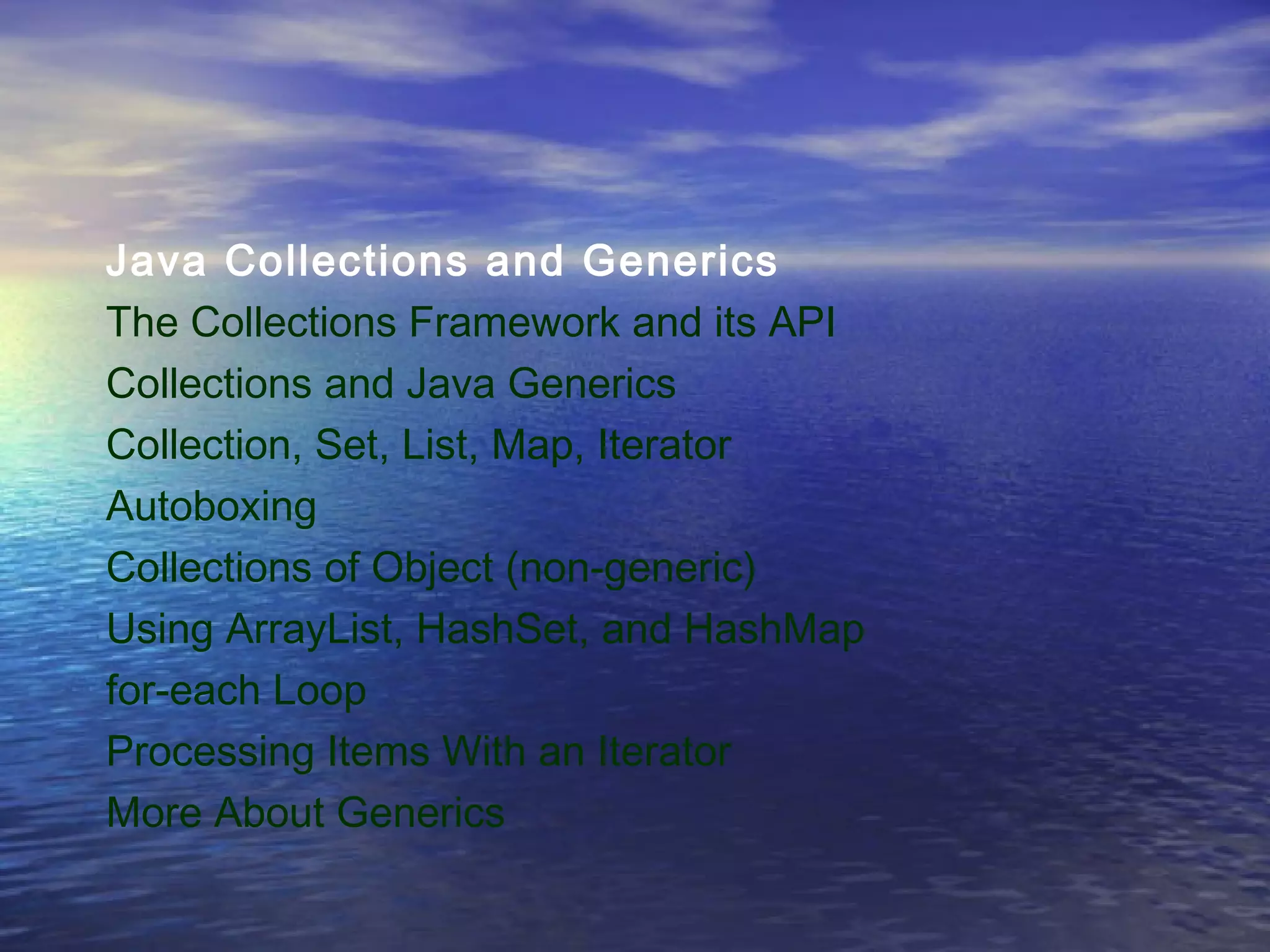
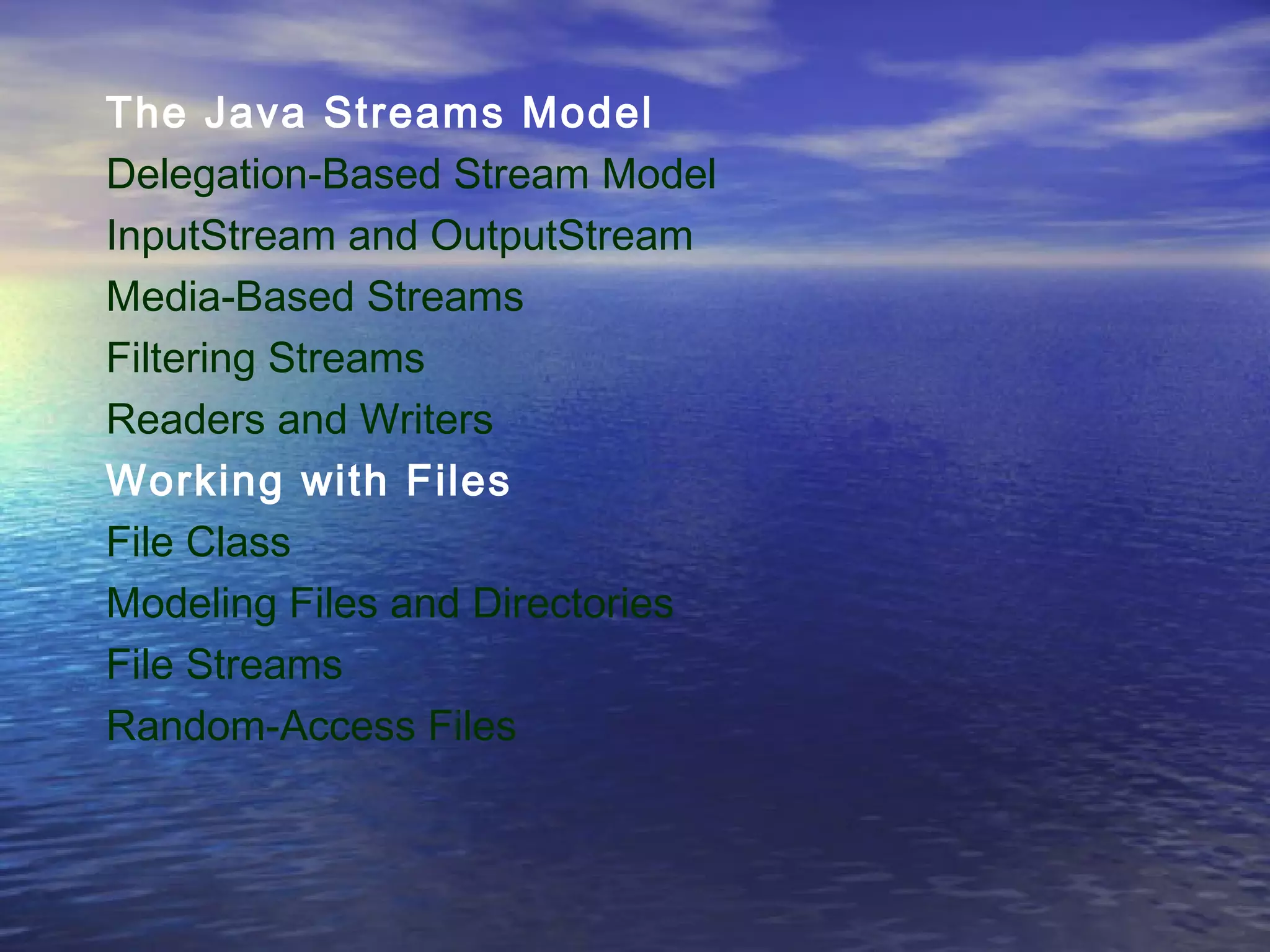
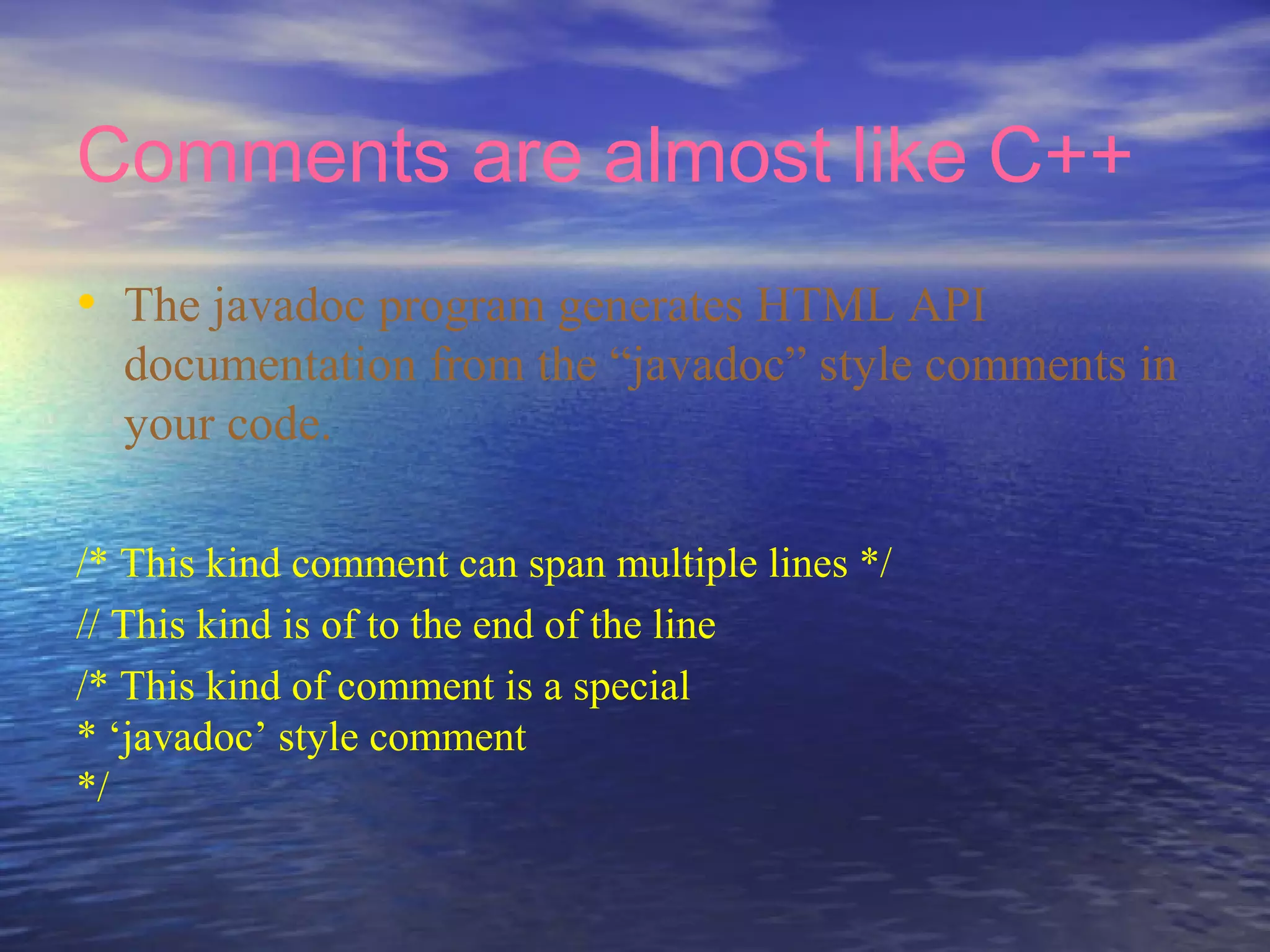
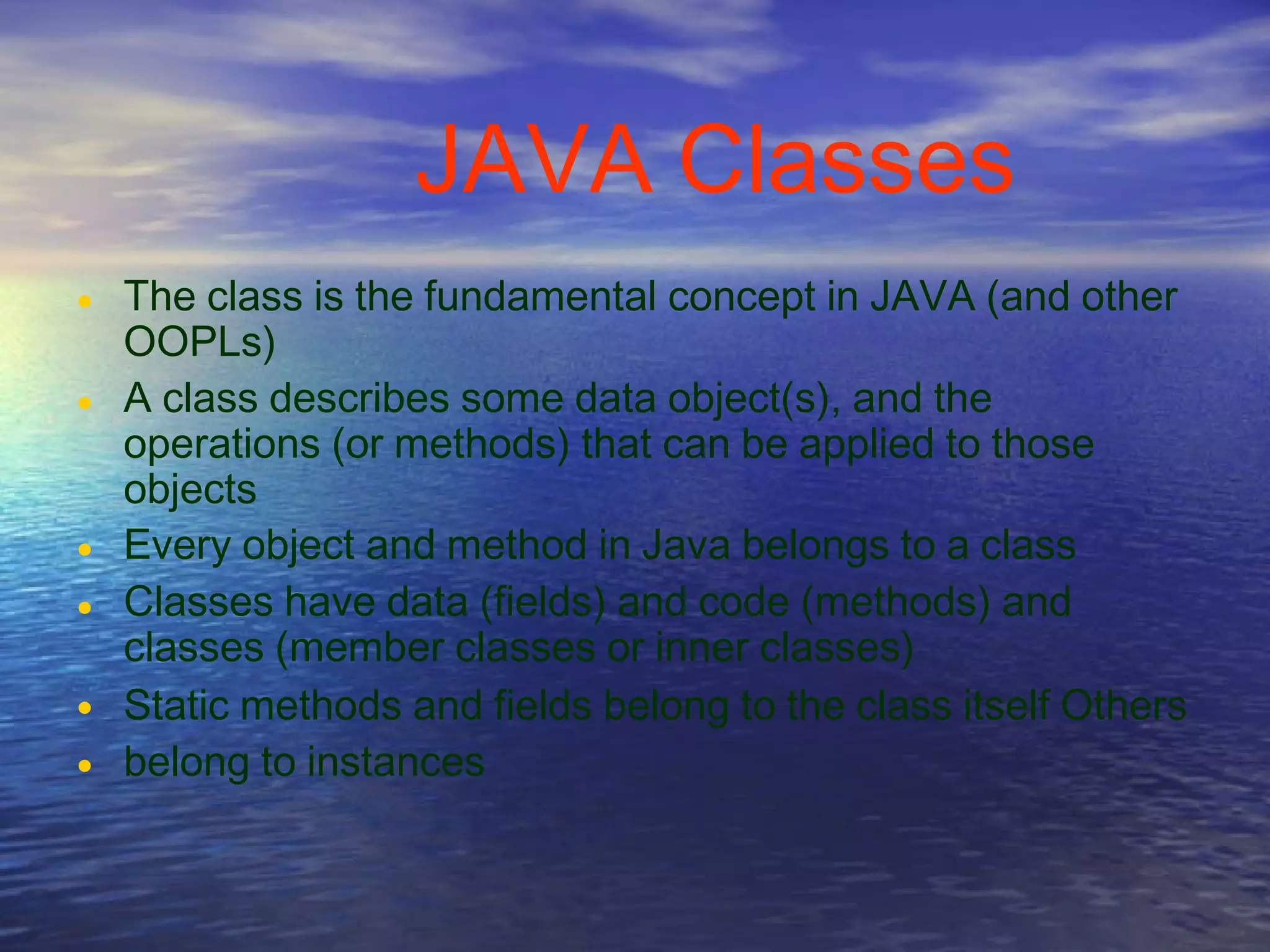
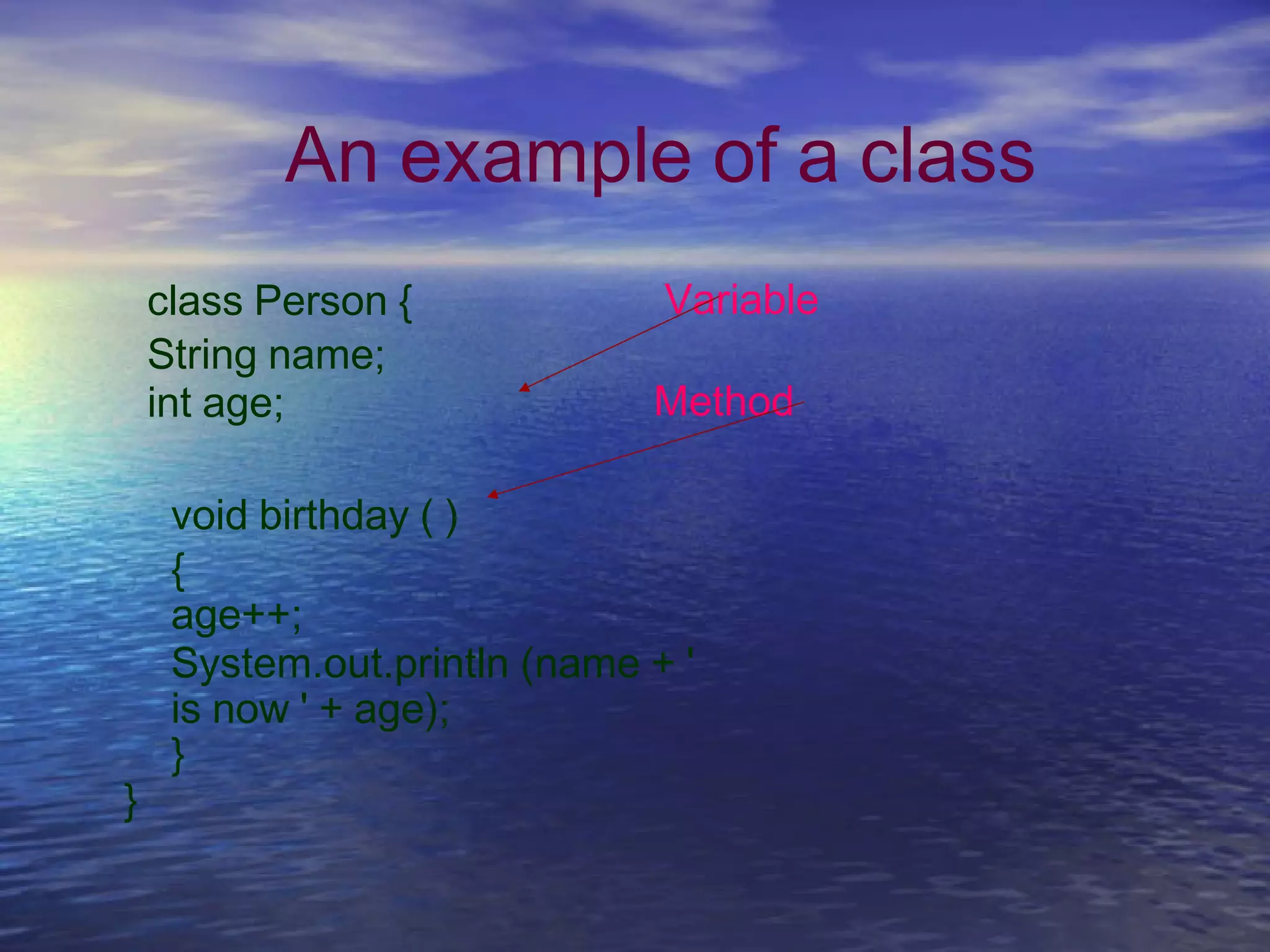
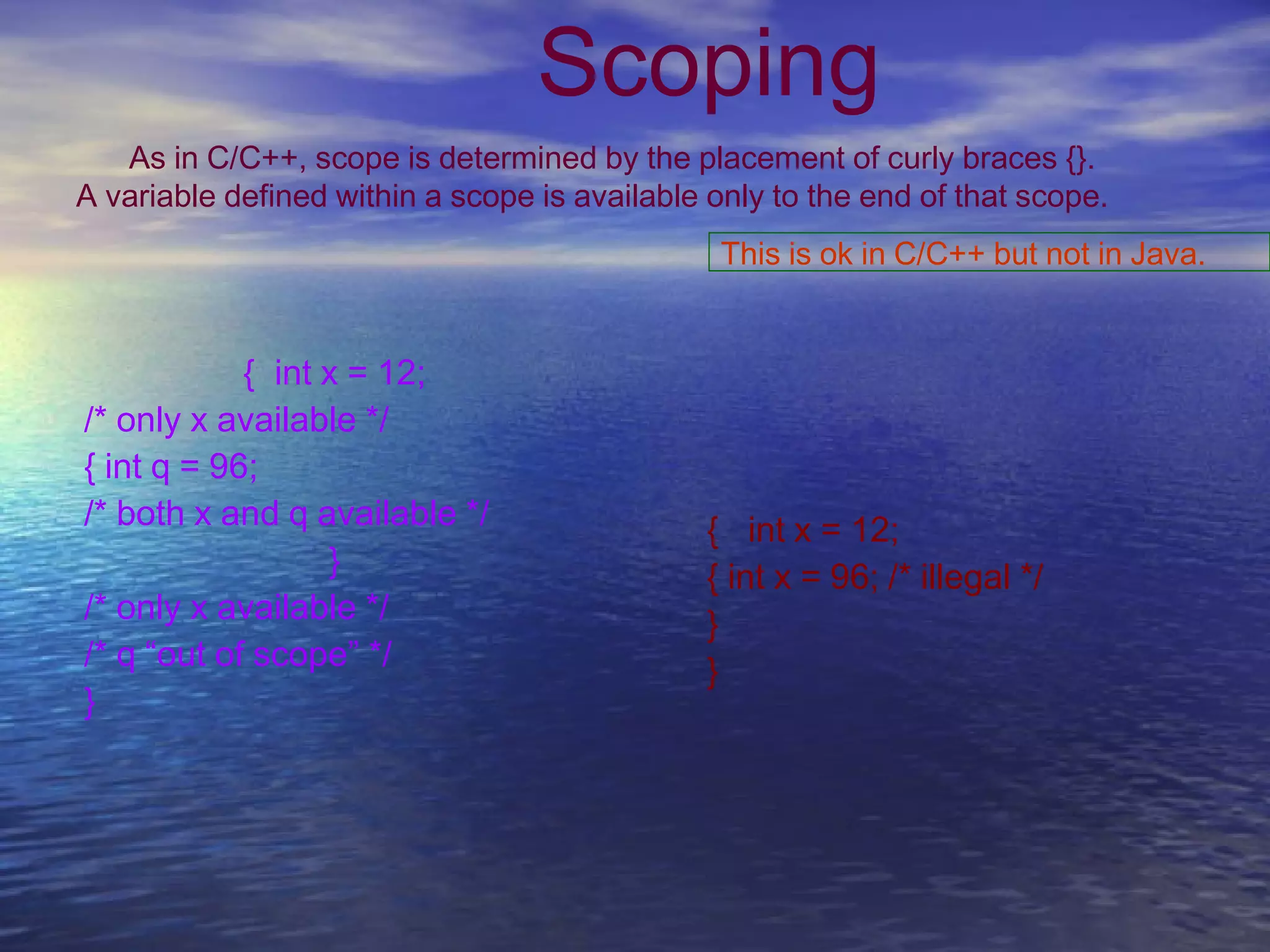
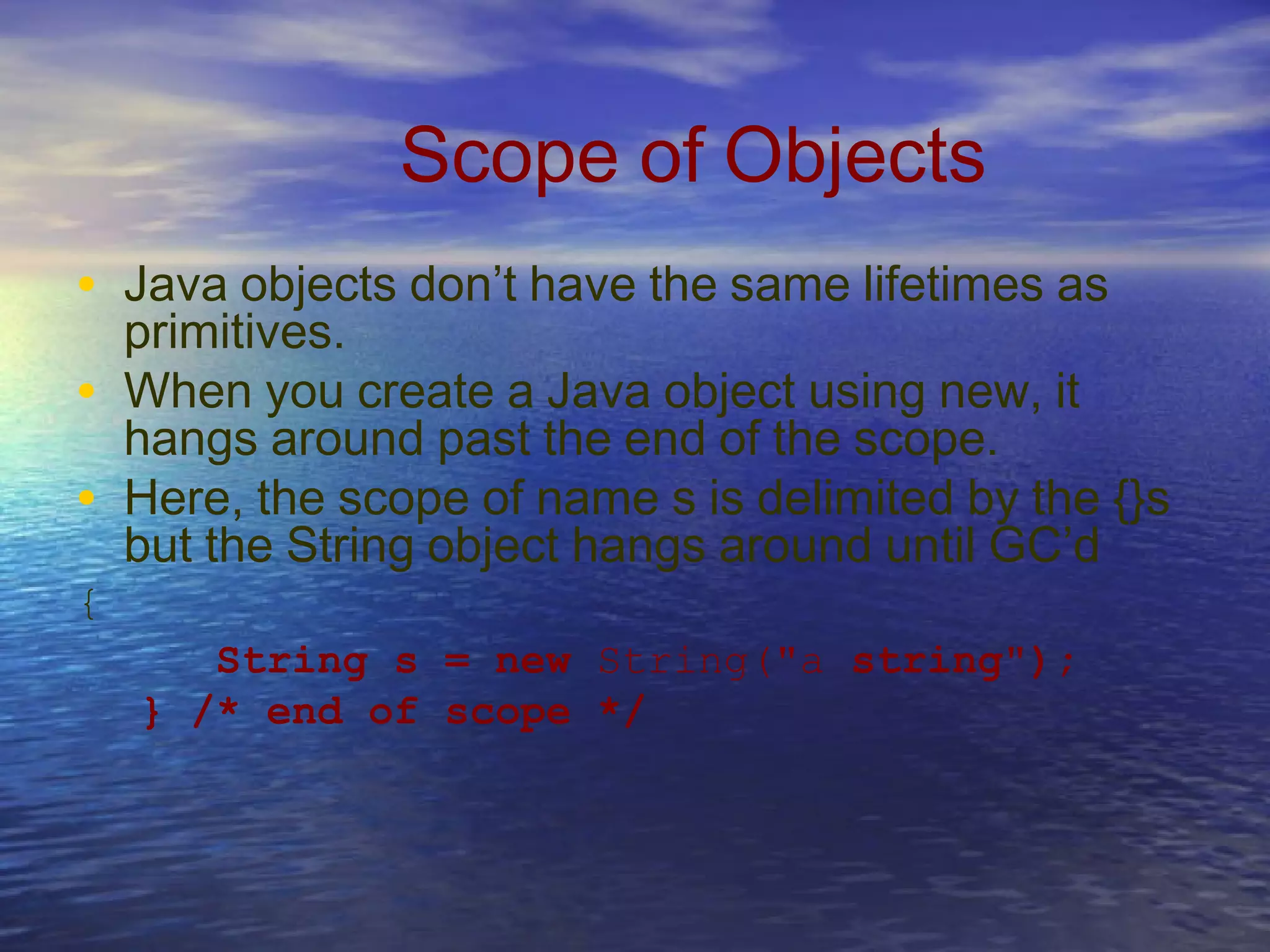
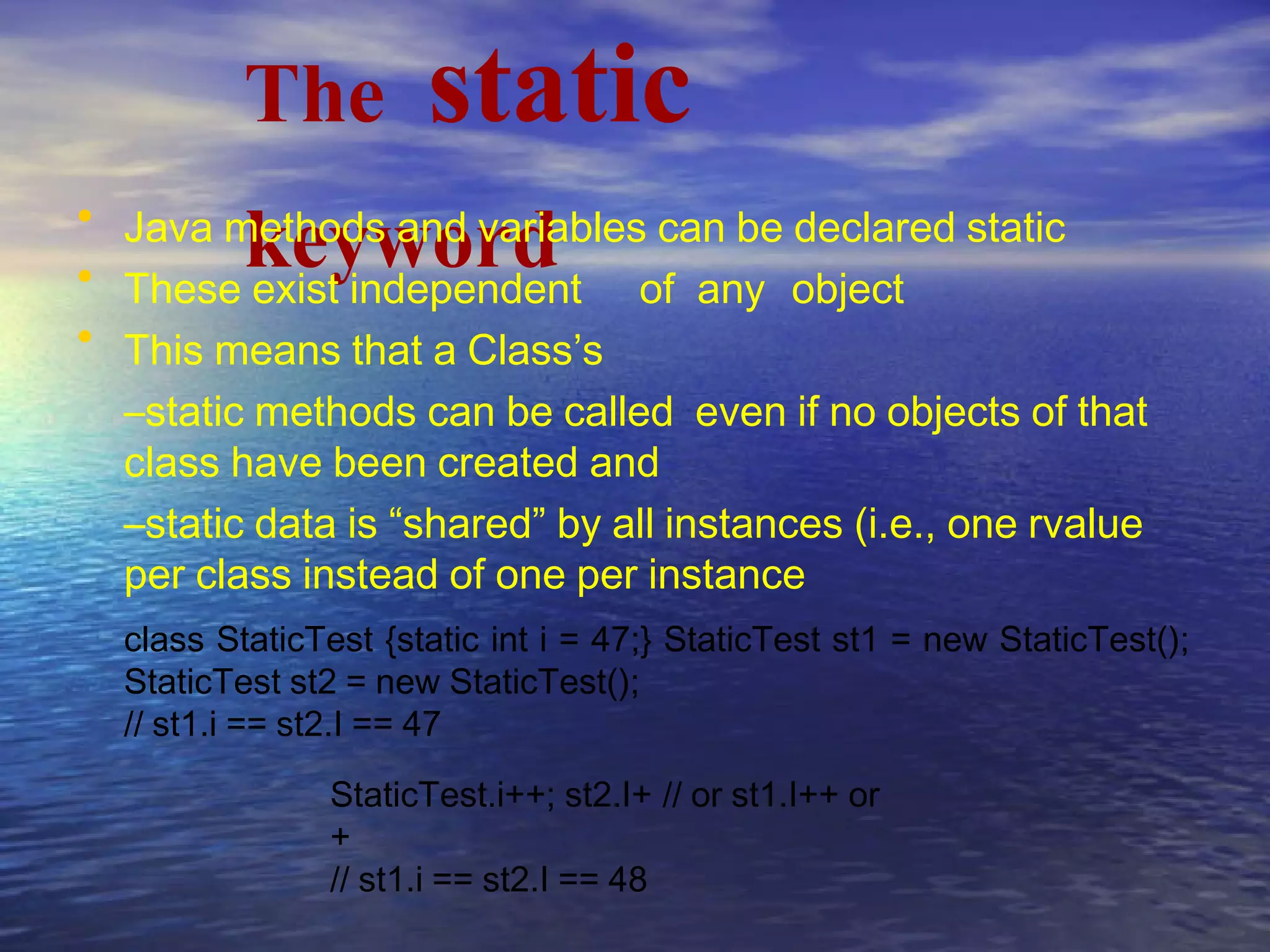
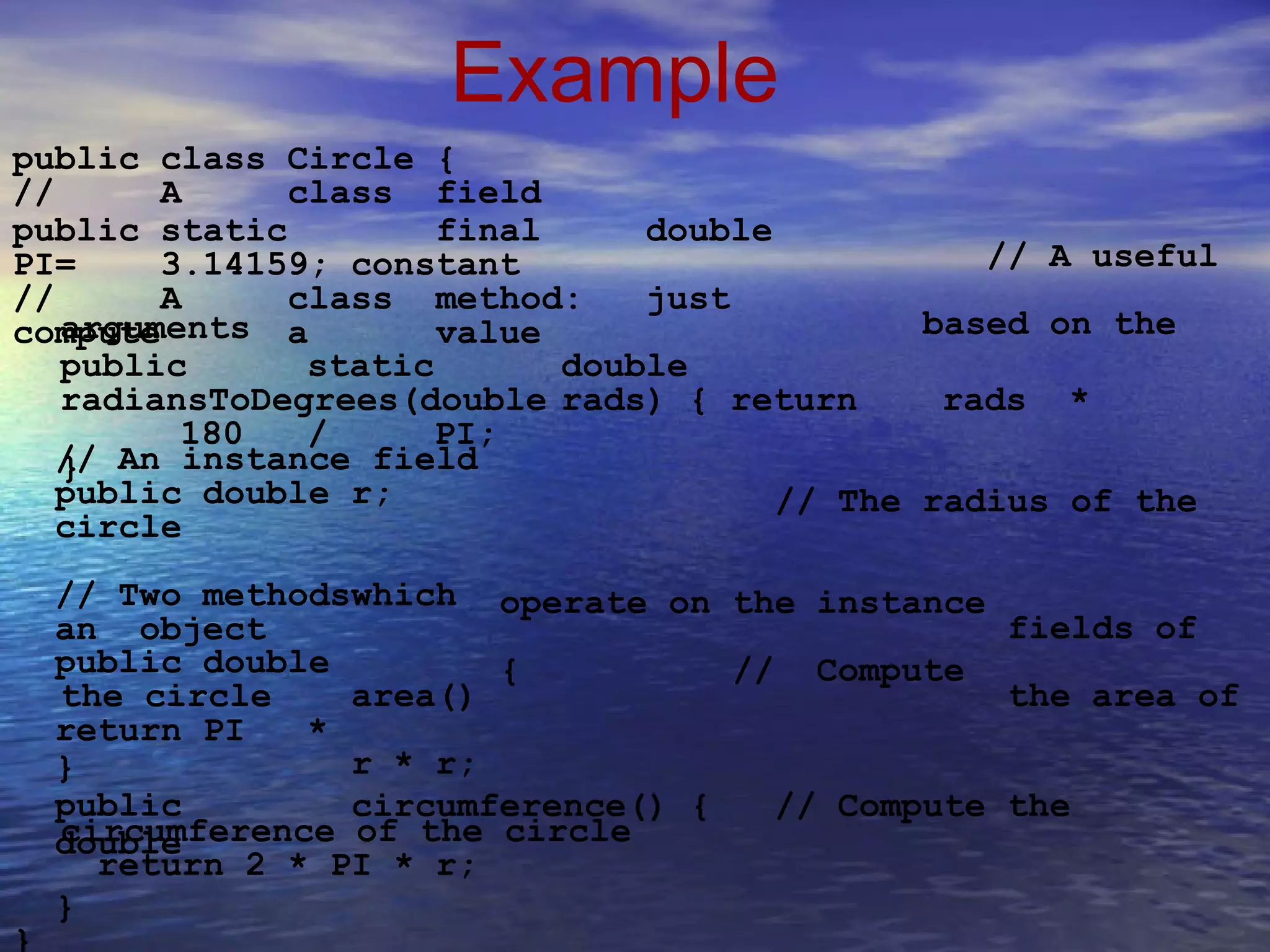
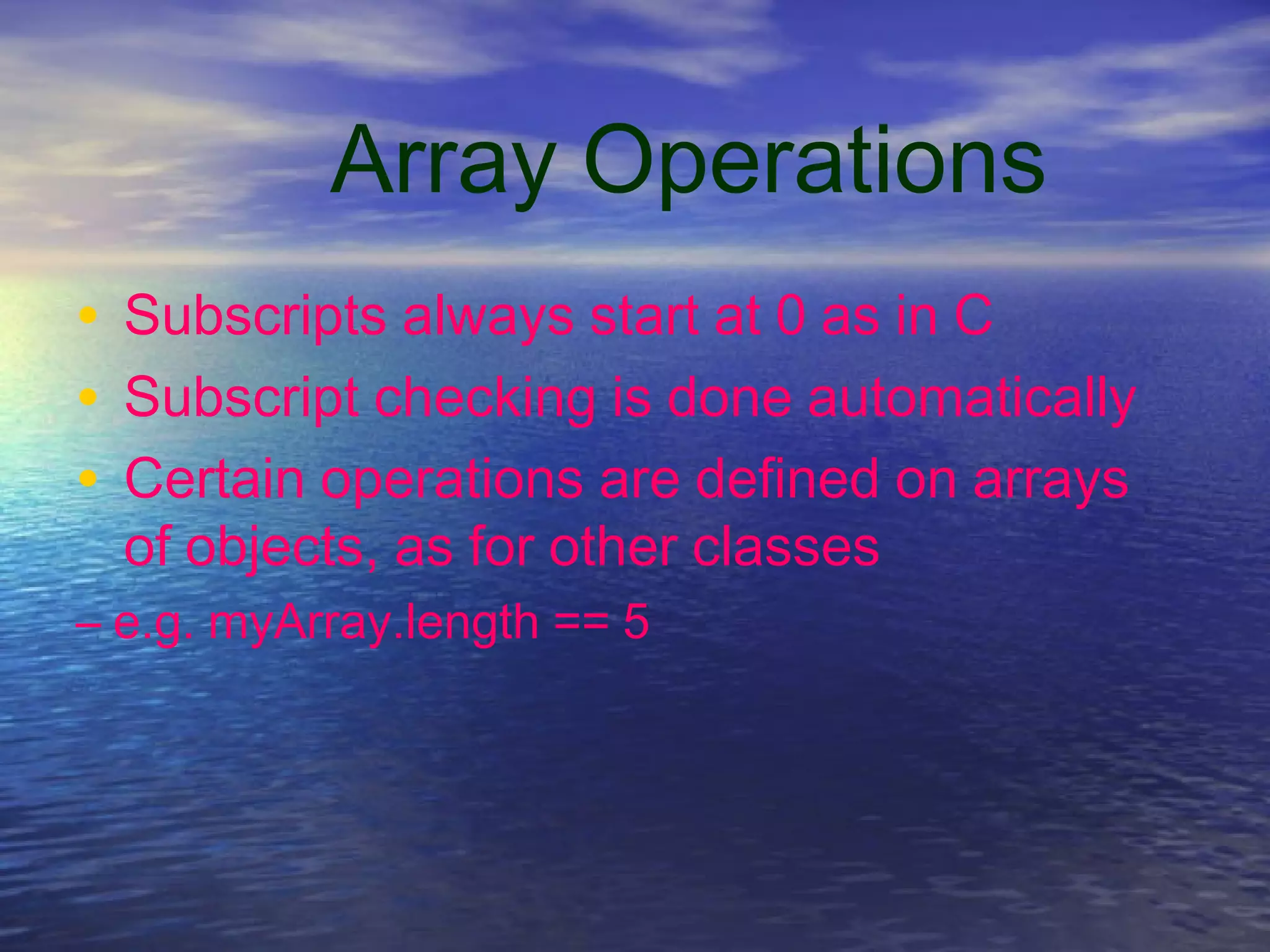
![An array is an object
NSIT ,Jetalpur
• Person mary = new Person ( );
• int
• int
myArray[
myArray[
] = new
] = {1, 4, 9,
16,
int[5];
25};
• String languages [ ] = {"Prolog", "Java"};
•
•
Since arrays are objects they are allocated dynamically
Arrays, like all objects, are subject to garbage collection
when no more references remain
– so fewer memory leaks
– Java doesn’t have pointers!](https://image.slidesharecdn.com/corejavaconcepts-180107061936/75/Corejava-Training-in-Bangalore-Tutorial-18-2048.jpg)
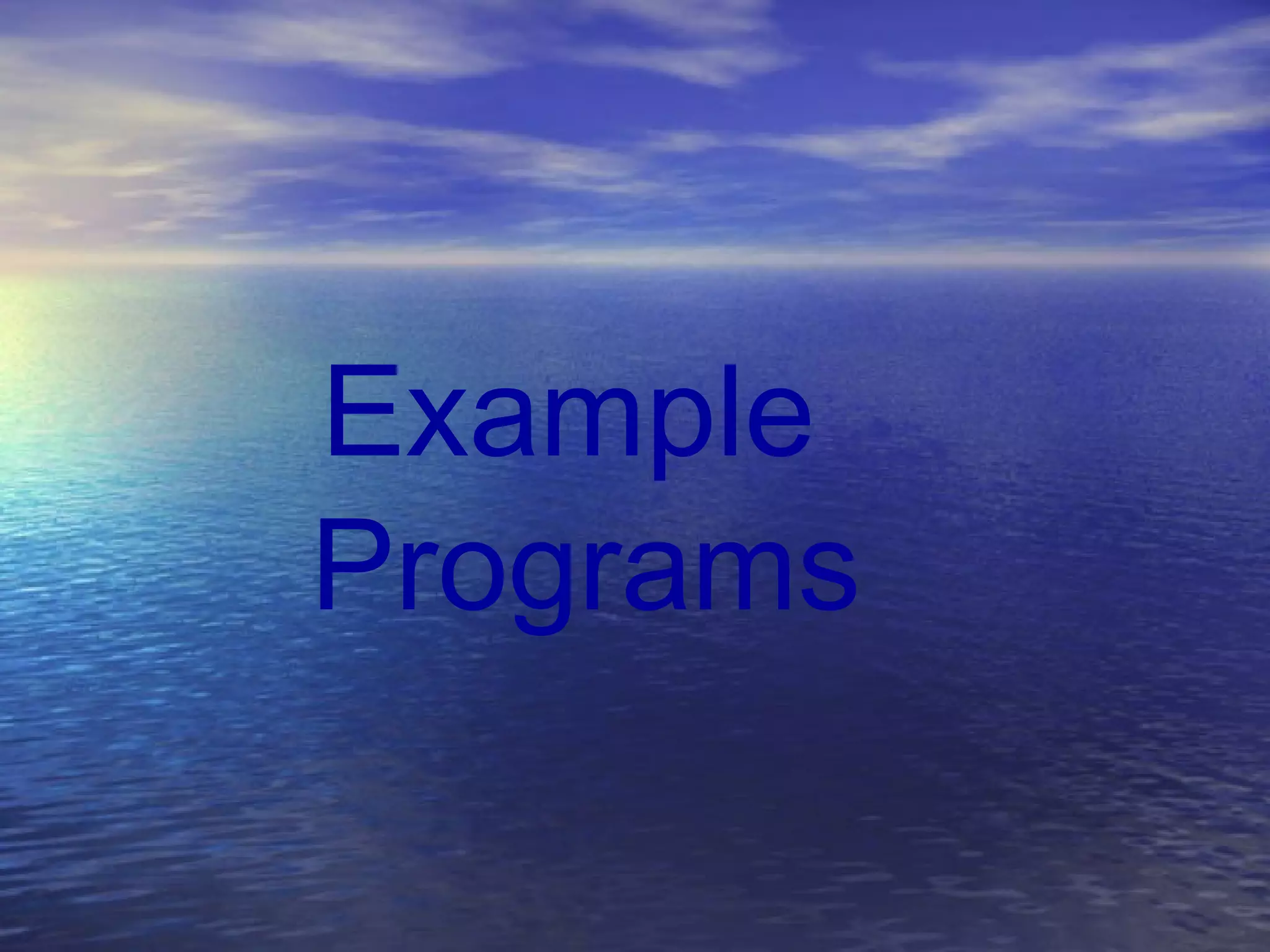
![Echo.java
•
•
•
•
•
•
•
•
•
C:UMBC331java>type echo.java
// This is the Echo example from the Sun
tutorial class echo {
public static void main(String args[]) { for (int i=0;
i < args.length; i++) { System.out.println( args[i] );
}
}
}
• C:UMBC331java>javac echo.java
•
•
•
•
•
C:UMBC331java>java echo this is pretty silly
this
is pretty
silly](https://image.slidesharecdn.com/corejavaconcepts-180107061936/75/Corejava-Training-in-Bangalore-Tutorial-20-2048.jpg)
![Factorial Example
/* This program computes the factorial of a number
*/
public class Factorial {
public static void
main(String[] args) { here
int input =
Integer.parseInt(args[0]); input
double result =
factorial(input); factorial
System.out.println(result); result
}
ends here
// Define a class
// The program
starts
// Get the user's
// Compute the
// Print out the
// The main() method
public static double
computes x!
if (x <
0) return 0.0;
double fact =
1.0; initial value
factorial(int x) { // This method
// Check for bad input
// if bad,
return 0
// Begin with an
while(x > 1)
{ fact = fact *
x;
each time
// Loop until
// multiply
x equals
by x
// and then](https://image.slidesharecdn.com/corejavaconcepts-180107061936/75/Corejava-Training-in-Bangalore-Tutorial-21-2048.jpg)
